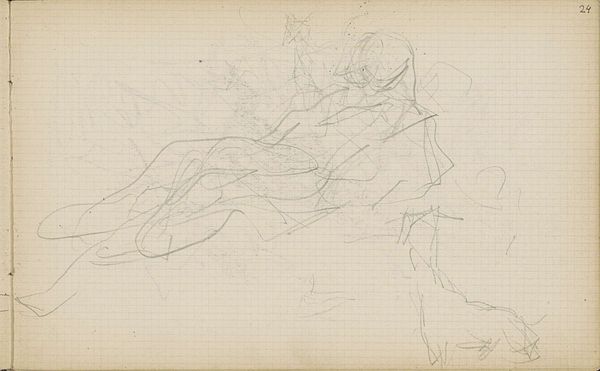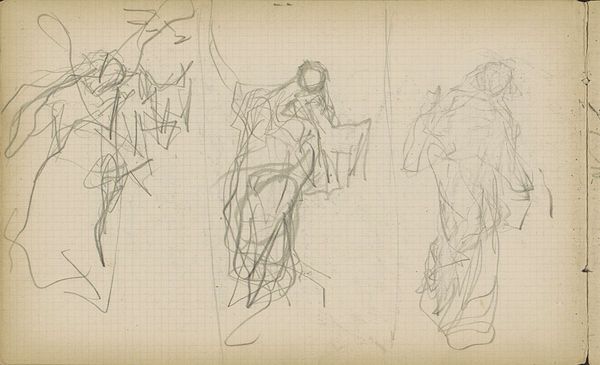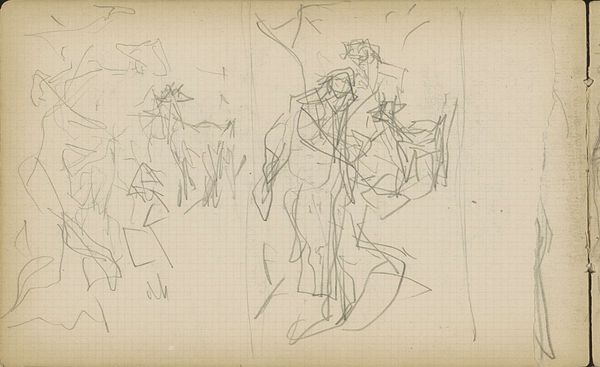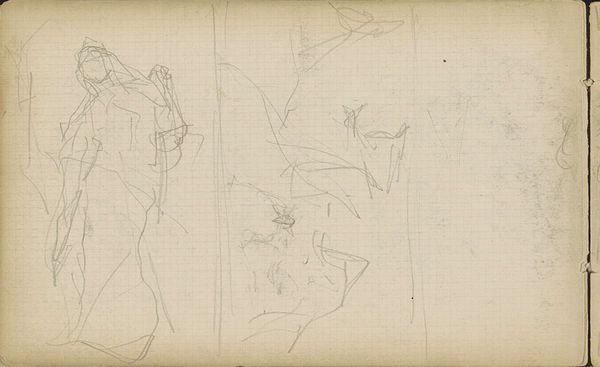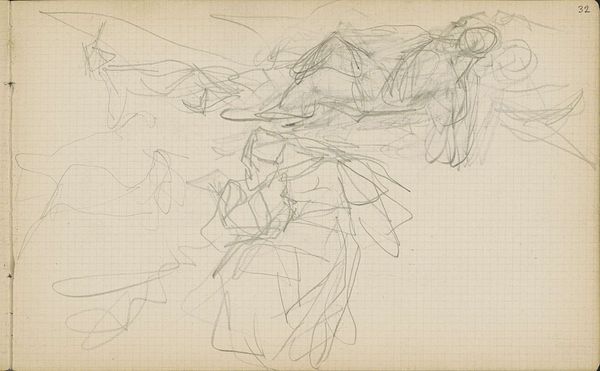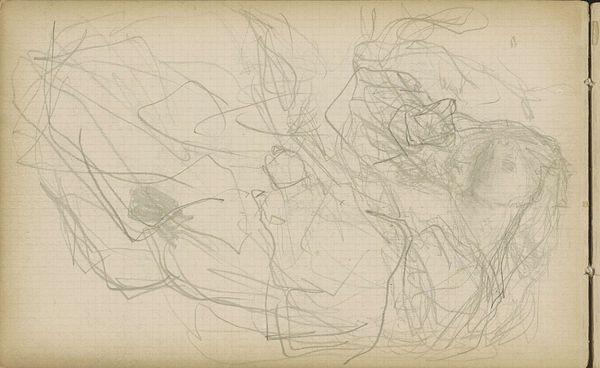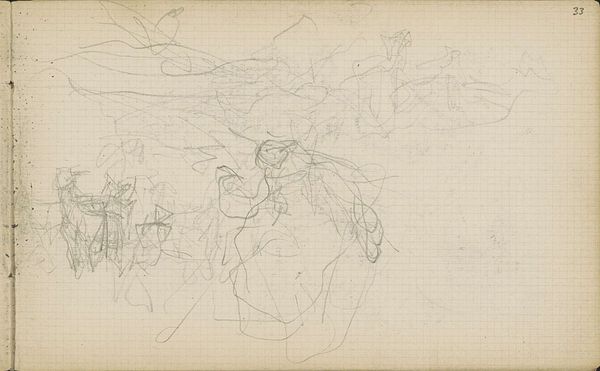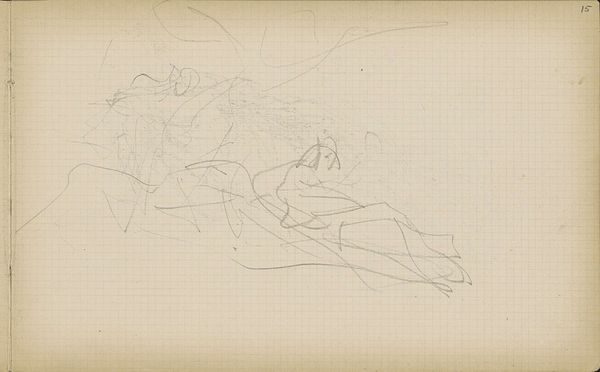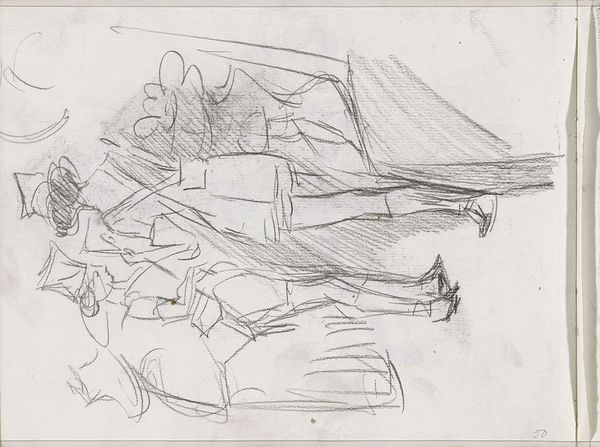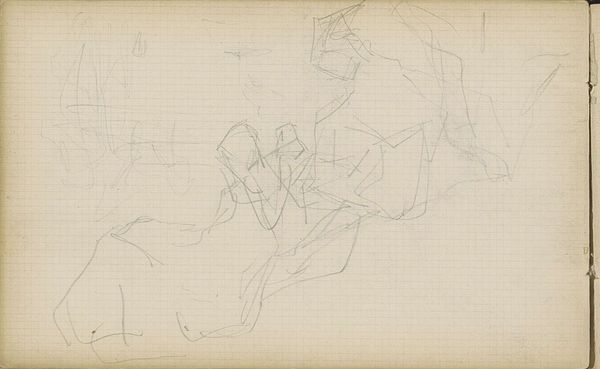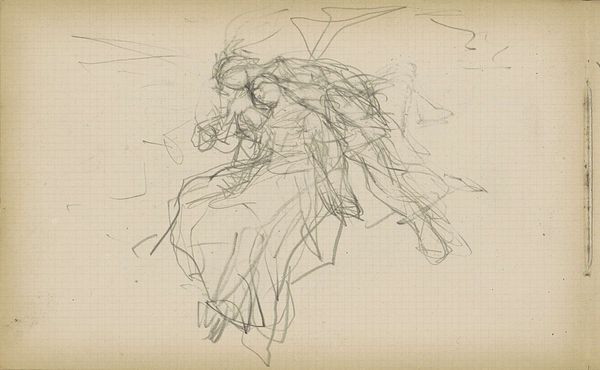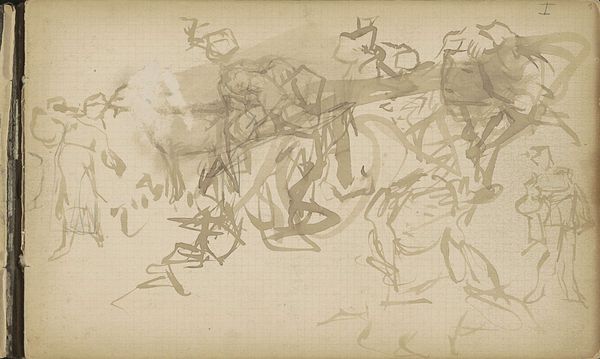
Studieblad, onder andere met twee figuren die zij aan zij staan 1849 - 1917
0:00
0:00
drawing, paper, pencil
#
portrait
#
drawing
#
toned paper
#
light pencil work
#
impressionism
#
pen sketch
#
incomplete sketchy
#
figuration
#
paper
#
personal sketchbook
#
ink drawing experimentation
#
sketch
#
pen-ink sketch
#
pencil
#
sketchbook drawing
#
sketchbook art
#
initial sketch
Copyright: Rijks Museum: Open Domain
Editor: This is a drawing entitled "Studieblad, onder andere met twee figuren die zij aan zij staan," which translates to "Study sheet, including two figures standing side by side." It was created by Matthijs Maris between 1849 and 1917. The medium appears to be pencil on paper, and it's currently held at the Rijksmuseum. I am struck by its ghostly quality, these figures emerging from a mass of scribbled lines. It feels incredibly raw and immediate. How do you read this piece? Curator: Focusing on the formal elements, we observe a fascinating tension between the defined figures and the chaotic surrounding lines. Maris doesn't offer us clear contours; rather, he builds form through accumulation and variation in the density of these marks. This incompleteness invites interpretation. Consider the texture of the paper itself – almost like a grid – in contrast to the figures, which imbues it all with an almost otherworldly dimension. Is this purely an exercise in form, or do you detect emotional content in the way Maris deploys line and tone? Editor: I see what you mean about the grid; it lends a sense of underlying structure even within the sketchiness. There's something almost hesitant about the linework; a delicacy, but also a vagueness. I think it projects a certain vulnerability or sense of transience. Do you think the rapid execution conveys the intended meaning, or does this emphasize more the process of creation over narrative? Curator: Ah, a crucial question. From a formalist standpoint, we must focus on the ‘how’ over the ‘what’. Consider the use of layering: areas of dense, dark hatching build form and volume, juxtaposed against lighter, almost ethereal lines suggesting movement and even perhaps an inner state. The inherent flatness of the paper, a critical property of this work as a drawing, contradicts these intended spatial illusions, generating an internal dynamism and emphasizing the materiality of the medium. Editor: That's a fascinating observation; the flatness paradoxically creating depth through the artist's hand. I initially missed the emphasis on materiality because the subjects seemed prominent to me. I have learned that, by appreciating these dualities in method and technique, we reach an elevated appreciation of the artistry here. Curator: Precisely. Maris’ formal exploration is an engaging study on its own merits, and demonstrates the inherent value in understanding what artists do as a practice in and of itself.
Comments
No comments
Be the first to comment and join the conversation on the ultimate creative platform.
